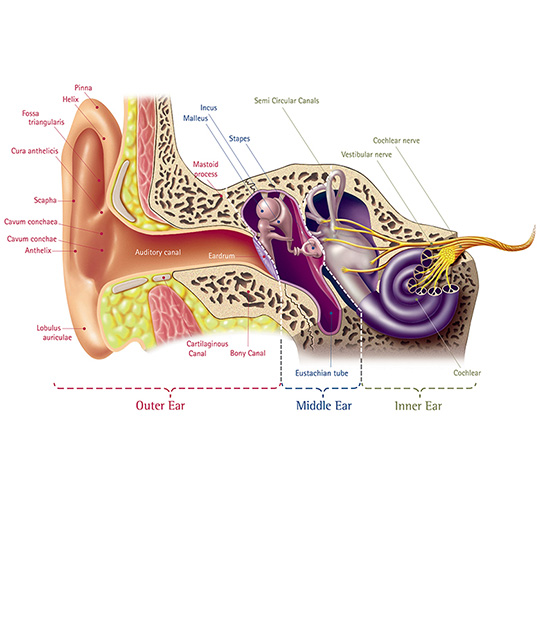
HOW WE HEAR
How we hear begins with sound waves, a vibration, which propels outwards like ripples on the water. The curved shape of the outer ear helps determine from which direction a sound is coming and encourages the sound waves to travel into your ear canal.
Sound Waves to Brain
Sound waves then progress into the ear canal where they reach the eardrum. The eardrum carries the vibrations through the middle ear bones (ossicles) into the inner ear. The inner ear (cochlea) resembles a snail in shape. Inside the cochlea, there are thousands of tiny hair cells. Hair cells convert the vibrations into electrical impulses that are transmitted to the brain through the hearing nerve. The brain identifies the sound and turns it into a sound that we recognise and understand.
Every hair cell has a small patch of sensory hairs (stereocilia) protruding from the top of it. Sound causes the sensory hairs to sway back and forth. If a sound is too loud, the stereocilia can be bent or broken. This causes the hair cell to die. A dead hair cell can no longer send sound signals to the brain and it cannot grow back. The high-frequency hair cells are the ones most susceptible to damage, so people with hearing loss caused by exposure to loud sounds, or as a result of aging, often have problems hearing high pitched sounds like birdsong and children’s voices.
Discover the signs of hearing loss.
